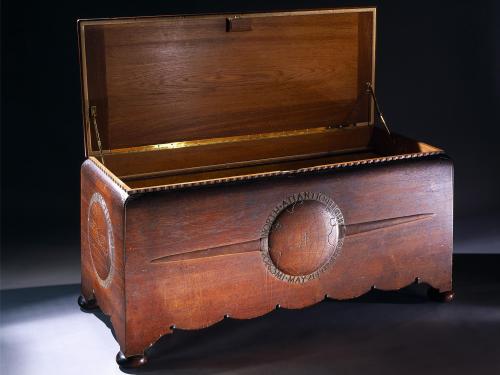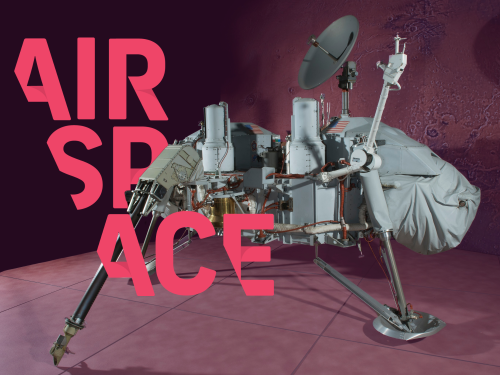
Stories of daring, stories of technological feats, stories of prevailing against the odds ... these are the stories we tell at the National Air and Space Museum. Dive in to the stories below to discover, learn, and be inspired.
Showing 1 - 10 of 361

April 11, 2025
During ongoing renovations to reimagine the Museum's galleries and entryways, the large sculpture Ad Astra was deinstalled and treated by the conservation team. After careful documentation and treatment, the sculpture was reinstalled in front of the new awning at the north entrance on the National Mall.

April 04, 2025
Over the years the Museum's Conservation Unit has received grant funding from the National Collections Program to help care for our most vulnerable artifacts. These projects showcase the artistry and engineering innovations of early aviation while addressing unique treatment challenges posed by fragile materials and past repairs.

March 21, 2025
In preparation for its new display in the Barron Hilton Pioneers of Flight gallery, Amelia Earhart's chest came to the Emil Buehler Conservation Laboratory at the Steven F. Udvar-Hazy Center for assessment and treatment.
February 13, 2025
Conservators had the rare opportunity to examine the cockpit of the Museum's North American X-15-1, allowing the stabilization of its delicate plastic components.

January 23, 2025
All the military aircraft and some of the civilian ones in our collections have to be demilitarized before they go on display or into storage.

January 23, 2025
All the military aircraft and some of the civilian ones in our collections have to be demilitarized before they go on display or into storage.

January 09, 2025
Our museum collection is sometimes a working one. That means that scientists come to do aviation or space research using objects in the Museum.

December 05, 2024
Hey Y'all! Since we've made it to season 10 (!!!) we thought we'd take the opportunity to re-introduce ourselves. In this episode you can hear a little more about Hosts Matt and Emily as well as a little bit about the rest of the team behind your favorite pod (we hope).

October 10, 2024
During WWII one plane survived more missions than any other in Europe. Named 'Flak-Bait,' this medium bomber was saved from the scrap heap after the war and immediately donated to the Smithsonian. However, public display and outdated restoration techniques have taken a toll on the plane.

July 01, 2024
An elephant tracking collar from the Smithsonian Institution’s Conservation Ecology Center at the National Zoo and Conservation Biology Institute is now in the collection of the National Air and Space Museum. Conservation explains why the collar is in the collection, the decision-making behind leaving the dirt on the surface, and how the museum decided to mount the collar for display.
